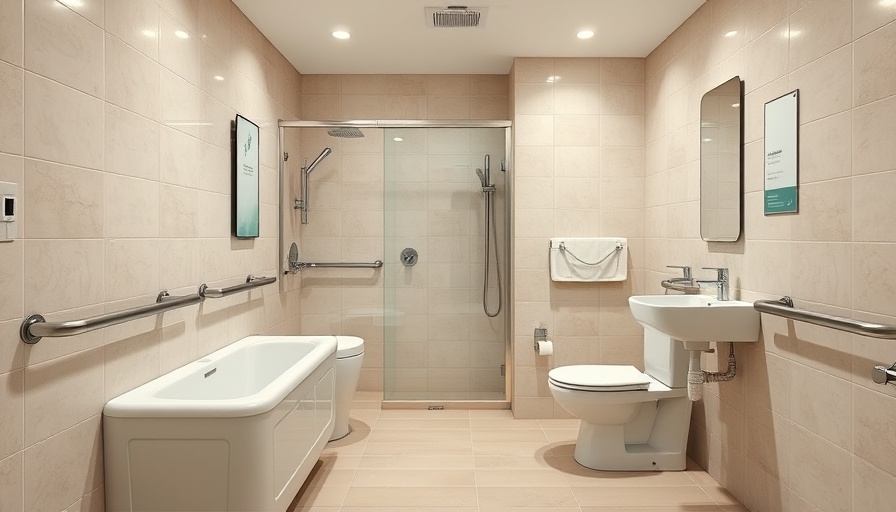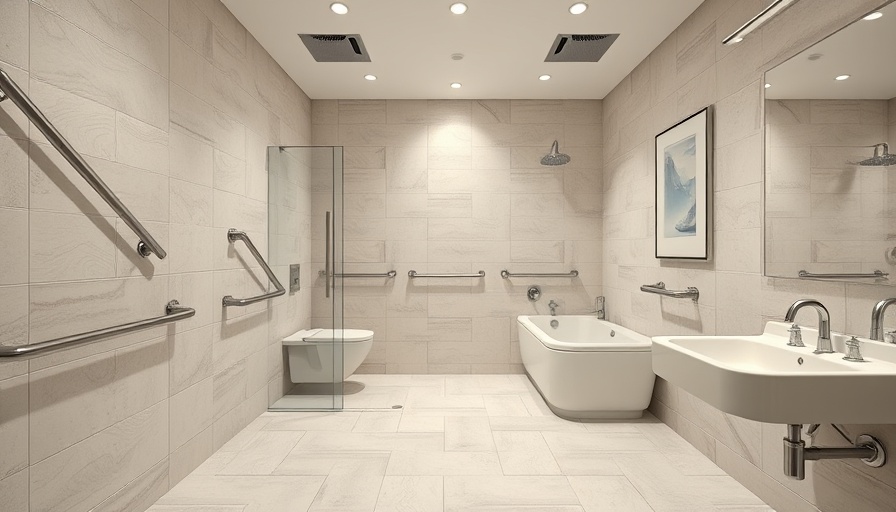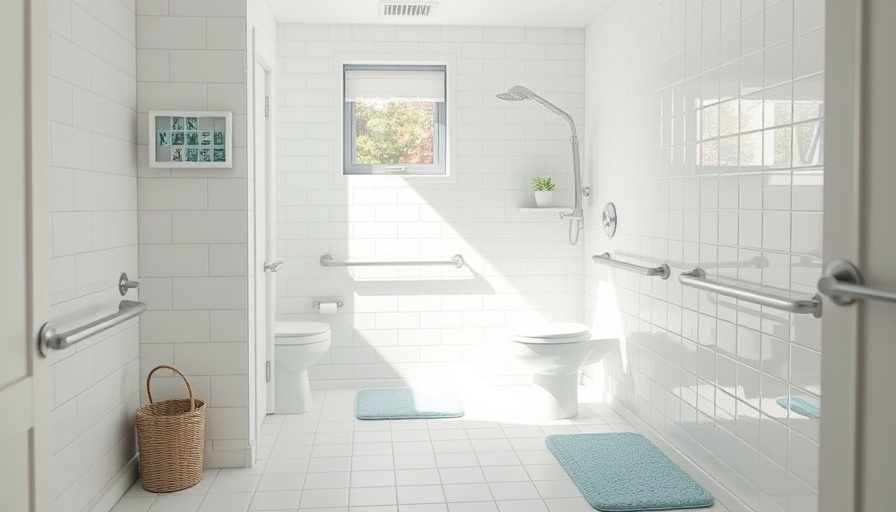
Understanding the Importance of Bathroom Safety for Seniors
As our loved ones gracefully age, one of the critical spaces in their homes that requires careful consideration is the bathroom. Ensuring its safety and functionality drastically impacts their independence and ability to maintain a quality lifestyle. This article dives deep into the essential features necessary for a safe bathroom designed with elderly care in mind, aiming to foster not only security but comfort and accessibility.
Essential Safety Features: A Foundation for Independence
When it comes to honoring the autonomy of seniors, safety must be prioritized. Grab bars are a key element in reducing falls, offering assistance as seniors navigate entry and exit points in the bathroom. Strategically installing these sturdy handholds near the shower and toilet can create a secure environment where users feel in control.
Further enhancing safety involves non-slip flooring. Options such as textured tiles and strategically placed mats reduce hazards significantly. Additionally, implementing slip-resistant strips can be a game changer, ensuring that those unexpectedly wet areas remain safe.
Mobility Solutions: Designing for Accessibility
Mobility challenges can make typical bathroom tasks daunting for elderly individuals. Introducing features like walk-in bathtubs or curbless showers allows for easy access, providing a hassle-free bathing experience. These installations are not just about comfort; they play a crucial role in preventing slips that can lead to serious injuries.
Another valuable addition is a raised toilet seat. This simple modification facilitates easier transfers from sitting to standing, significantly reducing strain on arthritic joints. Moreover, consider fitting shower heads that are adjustable or handheld, enabling seniors to bathe comfortably without stretching or bending excessively.
The Importance of Adequate Lighting
Lighting is another crucial aspect. As vision can deteriorate with age, bright and uniform lighting can prevent accidents. Installing bright LED fixtures—especially around high-traffic areas like the sink and shower—is essential. For nocturnal bathroom visits, nightlights or motion-activated lights can bridge the gap, offering guidance in the dark.
Emotional Well-being and Independent Living
It’s essential to recognize that a well-designed bathroom positively impacts not just physical safety, but emotional well-being too. When seniors feel secure and have the independence to manage personal hygiene without assistance, they experience a boost in self-esteem and a greater quality of life. Designing spaces that foster this sense of autonomy promotes not only independence but also dignity.
Future Trends in Elderly Home Modifications
As the aging population grows, so does the demand for more thoughtful home modifications. Emerging technologies that assist with daily tasks, like smart home systems for adjusting water temperature or voice-activated lighting, are becoming increasingly prevalent. These innovations promise future lifestyles that are not only safer but also more user-friendly.
Final Thoughts: Transforming Bathrooms into Safe Havens
Creating a safe and functional bathroom is a profound step in ensuring that elderly loved ones maintain their independence and dignity at home. The integration of safety features, mobility solutions, and adequate lighting will not only prevent accidents but also promote well-being. As decision-makers in home modifications, staying informed about these practical enhancements is vital.
By transforming the bathroom into a safe haven, we are not just investing in infrastructure; we are investing in the quality of life for the seniors we cherish. To further explore how you can improve your home for elderly care, reach out and take action today.
 Add Row
Add Row  Add
Add 




 Add Row
Add Row  Add
Add 

Write A Comment